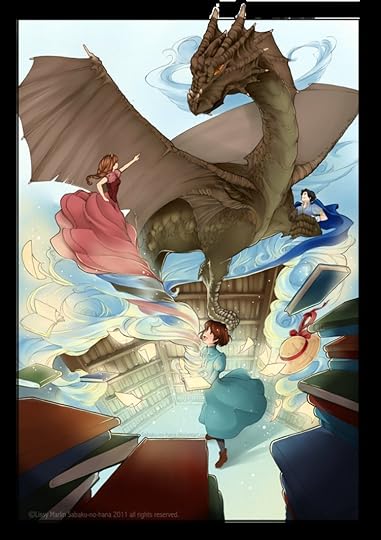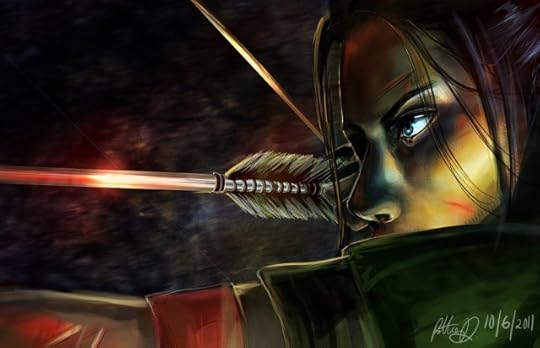Alane Adams's Blog, page 4
October 18, 2014
Story Revolution
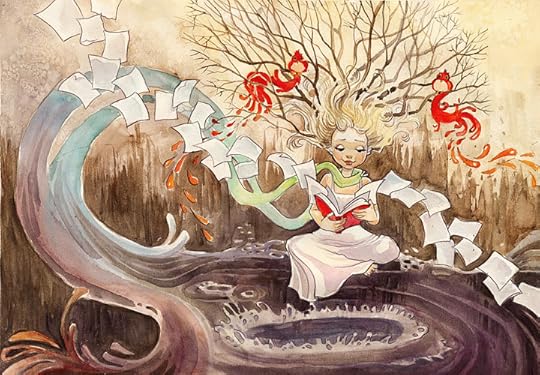 The times they are a changin! The history of storytelling dates back a millennia to the dawn of mankind but it’s a very different world today than when oral traditions were handed down from generation to generation. The invention of the printing press meant stories could be copied and distributed, then later mass produced. But the revolution of storytelling surely began when stories became visual and movies were born. Brought to life by actors and inventive studios, these same stories we’d read on dry pages became immortalized on the big screen, making us hungry for more content and connections beyond just mere words. As bandwidth has expanded to allow streaming video and the ability to surf through thousands of titles, the hunger for new content has become insatiable. Story telling began to be universal far beyond books and movies, translated into every imaginable medium: cartoons, video games, apps, and interactive digital platforms. With the advent of self-publishing the flood of new authors charging the gates is like a scene from a zombie apocalypse movie as this horde of new writers clamor to have you read their book.
The times they are a changin! The history of storytelling dates back a millennia to the dawn of mankind but it’s a very different world today than when oral traditions were handed down from generation to generation. The invention of the printing press meant stories could be copied and distributed, then later mass produced. But the revolution of storytelling surely began when stories became visual and movies were born. Brought to life by actors and inventive studios, these same stories we’d read on dry pages became immortalized on the big screen, making us hungry for more content and connections beyond just mere words. As bandwidth has expanded to allow streaming video and the ability to surf through thousands of titles, the hunger for new content has become insatiable. Story telling began to be universal far beyond books and movies, translated into every imaginable medium: cartoons, video games, apps, and interactive digital platforms. With the advent of self-publishing the flood of new authors charging the gates is like a scene from a zombie apocalypse movie as this horde of new writers clamor to have you read their book.
But one thing has never really changed and that’s the hero’s journey we look forward to. The good guy is supposed to win. But our heroes are getting more and more flawed, as if decaying like our world. The edges get sharper, the price paid higher, the device used to gain our attention more extreme. The end result is the bodies pile up. We see what kids will do to survive: kill each other without remorse in the name of the hunger games. We see Patterson-like thrillers where there is no boundary that can’t be crossed in the name of suspense, usually at the expense of a poor unsuspecting gullible female who is horribly abused, imprisoned and or killed. One of the most popular children’s book today shows kids trapped in an endless maze being hunted and killed by gray slug-like machines, their memories wiped and not a trustworthy adult in sight. On the romance front the stories appear to stay the same: boy meets girl, girl falls in love…then boy ties her up and whips her and we call it romance. The point is our story verse is changing. Are we tired of the same old, same old or are we being pushed over an edge we’re not comfortable with but accept as the new normal? Unleashed violence, sex with an actual leash, kid’s books that star kids as murderers.
I don’t know the answer but I don’t always like it. In my Legends of Orkney series, I cling to a certain sweetness in my characters. Sure they have their dark moments and sure, bad things happen, but within the bounds of what I consider a healthy mix of tension and mayhem. Every author has their own voice and their right to storytell how they wish, but for now, mine will remain a kinder and more forgiving one.
The post Story Revolution appeared first on Alane Adams.
October 3, 2014
The Power of Books
Have you ever pondered the power of a book? From the day we discover our first story, we are transported into a different world. I do not like green eggs and ham, I do not like them Sam I am. These simple words soothe and delight us. Charm us into reciting them over and over because they just sound so good in our heads even if they are nonsensical. The awesome power of a good tale to firmly snare our attention from toddler to septuagenarian is truly staggering. Books take us into the personal lives and thoughts of characters who we inhabit through the pages of a book. We first become enamored with pictures and colors, simple stories and fables, moral takes on doing the right thing. We get scared by big bad wolves and thrilled by knights in shining armor. We evolve and gasp at boys with wizardry and become infatuated with teen vampires with glittery skin. We mature into mysteries and thrillers where the bodies pile up and the plots thicken. We sink our teeth into historic sagas and generational tales that sweep us into other times and ways of lives. We read the classics and ponder where for art thou’s before we move on to scintillating romances and fall in love over and over again with brooding heroes who make us swoon.
The power of a book is astonishing in its simplicity. Pages upon pages filled with words. Good words, good pages, good books are priceless. We marvel at the author who created them, especially the ones who seem to have a secret formula to doing it over and over again. We devour these books, can’t put them down, and look forward to the next page turner to be released.
The power of books is the reason I write long into the night when I should be doing other things like sleeping. I long to create that connection, that visceral reaction, that kinetic relationship with my reader that makes them want to turn the page. I write and rewrite, read and reread, always hoping that the words committed to page will reach into the mind of the reader and twist their heart in the fist of my words, holding them in my grasp until the last page is turned. Recently a reviewer on Amazon had this to say about the first book in my Legends of Orkney Series, The Red Sun:
“The characters are brilliantly developed and the descriptive writing has the magical realm of Orkney jumping off of the pages as you read. I felt like I was right there along with Sam and his friends on one amazing, heart-pounding journey after another trying to save this special world.”
That kind of feedback is the dream of every writer, to ensnare the reader in their world, make their heart pound, and have them eager to read the next tale in the saga. It’s the reason we keep at it long after everyone else in the world has given up and gone to bed.
Keep the midnight oil burning!
The post The Power of Books appeared first on Alane Adams.
September 26, 2014
Oops! I Did It Again…
Brit by Jensquel
Do you find yourself writing the same story over and over again? You change the names of your characters and the color of their eyes, but underlying your heroes and villains is a typecast, a typical set of traits that you trot out: same story different plot. As writers we often find a pattern in our words, a sense of routine and rhythm that is comfortable like a pair of old shoes. It’s even more challenging when you’re writing a series. The first book is always the most novel and entertaining. It’s difficult to raise the stakes enough in each successive tale to keep the reader on the edge of their seat. The shock factor of The Hunger Games could hardly be repeated in the do-over sequel Back In The Arena (aka Catching Fire). The story feels a bit stale and rehashed. Don’t get me wrong, I enjoyed all the books, but there is nothing quite as tantalizing and exciting as that first taste of blood. One of the exceptions to this was the Harry Potter series not just because Harry kept getting older each year, allowing for his character to develop and his challenges to increase in intensity, but because Rowling masterfully reveals her villain piece by piece, never allowing us to see Voldemort fully-formed until the end.
Finding ways to raise the stakes is only one challenge an author faces. Another equally onerous task is weeding out every possible mistake, because I am here to tell you that if there is something inconsistent, repetitive, misspelled, or just plain wrong in your manuscript, some reader out there will find it and let you know. Gleefully so. Recently a reviewer of The Red Sun pointed out that in spite of five different editors going through the manuscript, in spite of countless proofreads, in spite of repetitive-phrase-checker programs run, I let my main character Sam feel like “a lamb led to slaughter” not once but twice in the space of a few pages! Obviously it was a mistake, but I should have caught it. My system of checking and double-checking somehow let me down. And that is indicative of the indy writing process: no matter how hard we try there are bound to be mistakes. This underscores the value of the heavy-duty editing process afforded by the traditional publishing houses who have multiple sets of eyes reviewing manuscripts before they are published.
I can take the criticism with a sheepish and embarrassed grin because ultimately the story has to win out, not one careless repetition, but it reminds us that no matter how much we polish and buff we will always find mistakes. How to avoid? Don’t skimp on editing. Do run a good repetitive phrase checker. There are programs that will do it much better than your naked eye. Listen to your book aloud, your ear will catch many of these mistakes. And when someone points it out to you, don’t cringe. The best authors make these mistakes every day and it’s only for the grace of their editors that they aren’t published for the whole world to see.
The post Oops! I Did It Again… appeared first on Alane Adams.
Oops! I Did It Again…
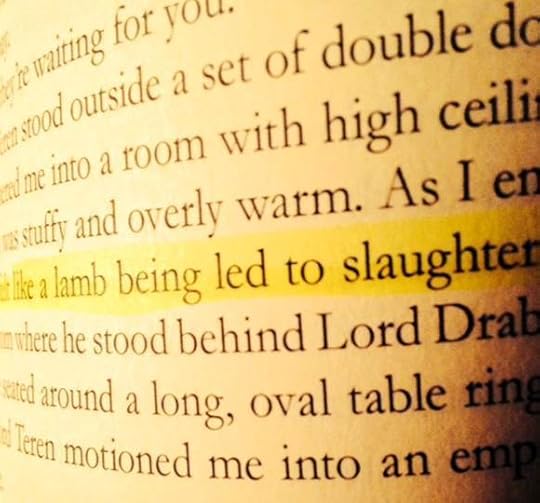
The Red Sun: Legends of Orkney
Do you find yourself writing the same story over and over again? You change the names of your characters and the color of their eyes, but underlying your heroes and villains is a typecast, a typical set of traits that you trot out: same story different plot. As writers we often find a pattern in our words, a sense of routine and rhythm that is comfortable like a pair of old shoes. It’s even more challenging when you’re writing a series. The first book is always the most novel and entertaining. It’s difficult to raise the stakes enough in each successive tale to keep the reader on the edge of their seat. The shock factor of The Hunger Games could hardly be repeated in the do-over sequel Back In The Arena (aka Catching Fire). The story feels a bit stale and rehashed. Don’t get me wrong, I enjoyed all the books, but there is nothing quite as tantalizing and exciting as that first taste of blood. One of the exceptions to this was the Harry Potter series not just because Harry kept getting older each year, allowing for his character to develop and his challenges to increase in intensity, but because Rowling masterfully reveals her villain piece by piece, never allowing us to see Voldemort fully-formed until the end.
Finding ways to raise the stakes is only one challenge an author faces. Another equally onerous task is weeding out every possible mistake, because I am here to tell you that if there is something inconsistent, repetitive, misspelled, or just plain wrong in your manuscript, some reader out there will find it and let you know. Gleefully so. Recently a reviewer of The Red Sun pointed out that in spite of five different editors going through the manuscript, in spite of countless proofreads, in spite of repetitive-phrase-checker programs run, I let my main character Sam feel like “a lamb led to slaughter” not once but twice in the space of a few pages! Obviously it was a mistake, but I should have caught it. My system of checking and double-checking somehow let me down. And that is indicative of the indy writing process: no matter how hard we try there are bound to be mistakes. This underscores the value of the heavy-duty editing process afforded by the traditional publishing houses who have multiple sets of eyes reviewing manuscripts before they are published.
I can take the criticism with a sheepish and embarrassed grin because ultimately the story has to win out, not one careless repetition, but it reminds us that no matter how much we polish and buff we will always find mistakes. How to avoid? Don’t skimp on editing. Do run a good repetitive phrase checker. There are programs that will do it much better than your naked eye. Listen to your book aloud, your ear will catch many of these mistakes. And when someone points it out to you, don’t cringe. The best authors make these mistakes every day and it’s only for the grace of their editors that they aren’t published for the whole world to see.
The post Oops! I Did It Again… appeared first on Alane Adams.
September 19, 2014
The Writing Life: Pick On Someone Your Own Size
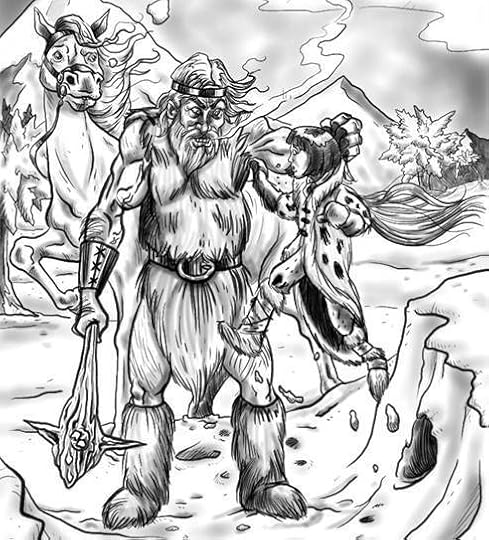 Your story falls flat. Have you ever heard those words? Just when you think you might have a lick or two of talent, you make the mistake of asking a real professional what they think of your story and the truth comes out. “It’s good, but… It’s just not quite there.” How frustrating is that? To work so hard, to strive to reach the top, and to find out again, you’re close but some critical element is missing. If I had a dollar for every story that fell just short of being good enough, I’d have enough bills to paper the wall of my office. There is an essential truth about writing that is not always apparent: We are only as good as our editors. It might seem an odd statement, because editors don’t necessarily make good writers. But the truth is, writers can’t edit their own work any more than a person can tickle themselves. We have no instinct for what works or doesn’t work in our own creations. The most precious asset a writer can obtain is not the talent they’ve spent years honing, but engaging the dedicated efforts of a highly talented editor who can parse out the story details that are weak and flat, details so subtle that the average editor will pass right over them.
Your story falls flat. Have you ever heard those words? Just when you think you might have a lick or two of talent, you make the mistake of asking a real professional what they think of your story and the truth comes out. “It’s good, but… It’s just not quite there.” How frustrating is that? To work so hard, to strive to reach the top, and to find out again, you’re close but some critical element is missing. If I had a dollar for every story that fell just short of being good enough, I’d have enough bills to paper the wall of my office. There is an essential truth about writing that is not always apparent: We are only as good as our editors. It might seem an odd statement, because editors don’t necessarily make good writers. But the truth is, writers can’t edit their own work any more than a person can tickle themselves. We have no instinct for what works or doesn’t work in our own creations. The most precious asset a writer can obtain is not the talent they’ve spent years honing, but engaging the dedicated efforts of a highly talented editor who can parse out the story details that are weak and flat, details so subtle that the average editor will pass right over them.
If you’re wondering what differentiates your book from those on the New York Times bestselling list, I guarantee you a large part, if not all, is the editor involved in polishing the book. Why are editors so important? Consider that so much of what writers do is internal. We bring our characters to life through our imagination. They live inside our head until we commit them to paper. In The Red Sun, our hero Sam Baron is a twelve-year-old boy who is struggling to deal with his temper and manage his newfound powers. When Sam finds out his father is trapped in a stone in a distant realm, he does everything in his power to save him. Should Sam succeed and save his father and get that happy ending? Or should he fall short, the same way we as authors fall just short of our goal?
It takes a trained and talented editor to help a writer sift through essential plot points to deliver a story which is satisfying and yet punches the reader in the gut every so often. Ultimately the choice is always yours, to listen to your editor and heed their comments, or stick to your guns. Just remember, being right won’t get you published. Being better than anyone else out there will. So find that amazing editor and listen to every cutting comment they make and know that they only want the purity of story to be told.
Keep crafting!
The post The Writing Life: Pick On Someone Your Own Size appeared first on Alane Adams.
September 11, 2014
The Writing Life: I See Dead People
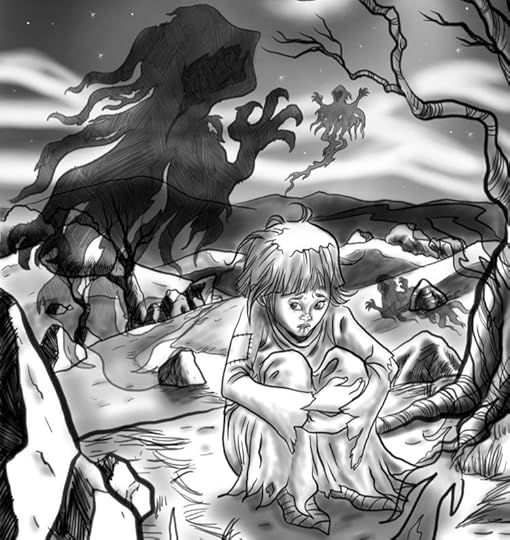
Scene From The Red Sun: Mavery Encounters Wraiths
Spoiler Alert: Don’t Read This If You Haven’t Seen The Sixth Sense, Hunger Games or Twilight…
One of the most fascinating stories of modern times unfolds in the movie The Sixth Sense. It delivers the perfect surprise ending that completely spins your head around, and drove me to see it again and again until I caught every instance where young Haley Joel Osment is speaking to a pensive but dead Bruce Willis. The interaction of the living and dead is so smooth, it inspires a sense of awe when the trick is revealed. It makes me think about my own stories and ask myself, have I done a good enough job creating that element of surprise?
We’re often told that every story has been told again and again, but what makes each story unique? If you’ve read one romance novel, haven’t you read them all? He gets the girl in the end! My stories are based on Norse mythology. Didn’t Tolkien lay claim to every elf on the planet? Along with orcs, talking trees, and magical talismans? How could there ever be anything left to write about? How do we make our story unique? I’m not saying you have to have that head-spinning pop that The Sixth Sense gave us, but I think you need two things: a Big Idea and a Big Twist. The good news is your story doesn’t need two big ideas, or three or four, just one really big idea is all it takes. In the Sixth Sense it was that this cute adorable kid talks to dead people. The fact that the shrink he talks to is also dead is the Big Twist. So one big idea and one big twist. That’s all it took to shock and delight moviegoers. Have you got something like that in your story?
Twilight was written as boy meets girl, girl falls hard for boy, and since it’s a romance, they live happily ever after. The fact this brooding poster boy happens to be a vampire is the Big Idea, but what’s the Big Twist? In my view it’s the fact that this bloodsucking undead creature has a heart. It might not beat, but in the final scene we see that Edward’s love for Bella is real. Impossibly so. And we swoon. Think of The Hunger Games. The Big Idea is pretty obvious: let’s put a bunch of kids in a glass bowl and see what happens when they have to fight to the death. What’s the huge twist? It’s not the fact they’re kids. We know that going into it. You could argue it’s the moment they outsmart the gamemakers and try to poison themselves, thus offering no winners and beating the system. But for me, the big twist happens when we discover Katniss actually cares. This is a girl who wanted to drown the family cat as we learn on the first page and has grown accustomed to numbing poverty and despair. She could have easily given up, or beaten her opponent, but her heart grows two sizes like the Grinch’s and she softens in such a way she’s reinvented as a character in that final scene.
As I think back over my own story, The Red Sun, I see lots of big ideas, Sam is a Son of Odin and his mother is a witch. That’s cool. But it’s not the one big thing. So what is it? For me it’s how the sun has been cursed and every time Sam loses his temper, it gets worse. He and the sun are connected and he must get control of his anger to defeat the curse and save his friends or all will be lost. That’s a Big Idea. The twist is… well I can’t tell you unless you’ve read the book. If you’ve read it, then you already know!
Does your story have a big enough concept? When the trick is revealed, do you leave your readers with a sense of satisfaction that the ride was worth it? There is no greater wonder to the human spirit than a story that surprises us. Delights us. Transports us. It’s your mission as an author to bring your reader along, giving them a Big Idea they can understand and then pull the rug out when they least expect it so you leave your reader with a jaw-dropping or heart-wrenching moment. Every great novel should have at least one of those.
Keep surprising!
The post The Writing Life: I See Dead People appeared first on Alane Adams.
September 5, 2014
The Writing Life: The Truth and Nothing But The Truth So Help Me Odin…
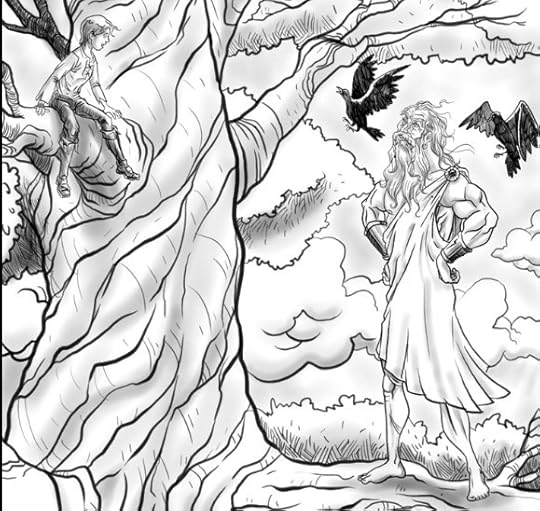
Sam and Odin
Is it okay to stray from the facts when you are writing mythology based fiction? Can you meddle with the archetypical character traits of historical figures? In the first book of my Legends of Orkney series, The Red Sun, there is a scene where my main character Sam confronts Odin who is represented as a golden eagle in the Yggdrasil tree, then morphs into an imposing human Odin complete with a set of “blazing topaz-blue eyes”. According to Norse mythology, Odin lost an eye to Mimir in exchange for the wisdom Mimir spoke. So why did I choose to show the Norse god with a matching pair of eyes?
Creative license imbues the author with the power to extract the elements of myth that intrigue and form characters and then embellish them to adapt to the drama of the story. Odin is the highest of Norse gods and attributed with creating the universe. He could change shape and often traveled about appearing as an ordinary mortal. But in this scene he reveals an imposing and omnipotent version of himself, and in my view would want to be seen as whole and complete, part of the vanity of being an all-god. Later in the series when we see Odin at home in his throne room in Valhalla, a closer version of his true physical self is revealed, missing eye and all.
This leads me to the second question: As you take existing people and places and manipulate them into your fiction, is it okay to freely borrow from reality to create your fictional world? I say absolutely! That’s what makes it interesting. When we think of the Hogwarts train arriving into London’s King’s Cross Station Platform 9 ¾, we know that particular platform doesn’t actually exist, but we do know the train station exists, and that London exists. This whole concept of a world within a world is what makes it so interesting and exciting to us because on the one hand it’s familiar and on the other it’s magical and fantastical, and we love the combination! This is what I have tried to create in the world of Orkney, this idea that we have the real world element of these islands that actually exist and have been lifted out of our world into the Ninth Realm of Odin, establishing a magical realm out of real world physical elements and history.
As I write my Norse based mythology fiction, I feel a sense of freedom that I can embellish on the archetypical myth that was the basis for Prose Edda and the foundation of the story of Odin and the other Norse gods, and that I have not just the right, but the fun privilege of fictionalizing it in a way that audiences can relate to and reconnect with an ancient mythological character in a new and different way, while still staying within the familiar identities of these figures. As an author, I think it’s important to give yourself permission to borrow liberally from existing mythology and places which are familiar themes to readers and then embellish it with your own point of view and populate characters who can challenge the existing mythological type into acting in all new ways with new behaviors and outcomes.
Keep embellishing!
The post The Writing Life: The Truth and Nothing But The Truth So Help Me Odin… appeared first on Alane Adams.
August 29, 2014
The Writing Life: Let It Go! Let It Go!
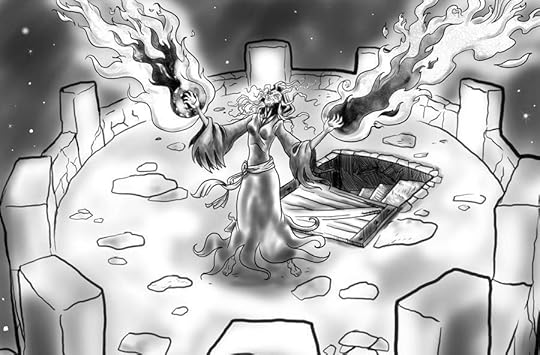 Writing is like trying to escape quicksand. The harder you try the faster you sink. This is the wonderful secret about writing. It feels effortless when the author’s mind is left to speak freely. The best writers draw on their creative energy without applying a filter, successfully turning off the voice in their head that insists on organizing words into something meaningful or big. They know that the art of storytelling comes from somewhere unconscious, a place so deep inside that they don’t know it’s there. Sometimes the best way to tap into it is to let it have its way with you, fire away as your fingers fly over the keyboard without even looking at the screen. Scenes unfold in your mind’s eye while your creative brain dumps its core onto the page. You don’t have to do anything except stay out of the way!
Writing is like trying to escape quicksand. The harder you try the faster you sink. This is the wonderful secret about writing. It feels effortless when the author’s mind is left to speak freely. The best writers draw on their creative energy without applying a filter, successfully turning off the voice in their head that insists on organizing words into something meaningful or big. They know that the art of storytelling comes from somewhere unconscious, a place so deep inside that they don’t know it’s there. Sometimes the best way to tap into it is to let it have its way with you, fire away as your fingers fly over the keyboard without even looking at the screen. Scenes unfold in your mind’s eye while your creative brain dumps its core onto the page. You don’t have to do anything except stay out of the way!
Or course gibberish is just gibberish, you must have a measure of talent, a knowledge of craft, and a stock of ideas that provide the interesting flaws and twitches for your characters. But don’t worry! You have a storehouse of ideas that has been built up over years of reading books and watching them unfold on the screen. You have accumulated thousands of stories since you heard your first nursery tale. You instinctively know more about storytelling than could ever be taught in a class. All you have to do is release your innate creativity by giving it free rein. You can’t choke it back with rational thinking and worry about whether you’ve dotted your i’s or properly placed your modifiers. Leave that for the editing cycle. You want your story to sing with passion and plumb the unexpected. If you hold on too tight, it’s bound to get stale and boring, and if it’s boring to you, imagine how your reader feels!
In a scene from my fourth book in the Legends of Orkney series, my characters were floating down a river. Boooring! So bam I added some mud sprites with sharp little teeth and pointed spears that swarmed all over them. Problem solved! But if you don’t write fantasy, your characters can still be uniquely human and do the unexpected if you’ll just get out of their way. Your creative spirit lives deep inside you and it’s afraid to come out if its going to be strangled by logic and reason, and criticized for poor grammar and sentence structure. So keep your inner critic at bay until the creative mind has done its job. Then bring out the big guns and get the editing brain in place. No one lieks typose.
Keep writing!
The post The Writing Life: Let It Go! Let It Go! appeared first on Alane Adams.
August 22, 2014
The Writing Life: May The Odds Be Ever In Your Favor
Katniss by Patsie
In the popular series The Hunger Games, our heroine Katniss Everdeen has no hope of survival. Bravely stepping in as tribute for her sister, she enters into a game where the chances of exiting alive are practically nil. And yet, Katniss battles, she fights to survive, she endures. The same way she slogged along for years keeping her family alive and well fed. Katniss is the unsung hero. The quiet warrior. Wishing for a better life but not expecting it. In many ways, the writing life is one long series of Hunger Games. We have as much chance of getting through that slush pile as Katniss has of getting out of the arena alive. But still we write. We submit. We eke out a living quietly waiting for the world to discover us. We bleed, we suffer, we face the death of our hopes every day.
If asked to step in, I think writer’s would volunteer the same way Katniss did if it meant a chance at winning the grand prize: acceptance into that elite club of published authors. Is writing that important? Can you see aspiring writers battling it out with knives and arrows to win? If you’re not a writer, you can’t understand. If you are, you’re thinking, oh yeah, give me a bow and arrow and a head start and I’ve got this! Life can be cutthroat, no more so than in the writing world where the acceptance rate is less than 1%. The truth is, Katniss has better odds at surviving than writers do of succeeding. So why do we do it? The same reason people play the lottery. You can’t win if you don’t buy a ticket, and you can’t succeed as a writer if you don’t write. So here’s hoping the odds are ever in your favor. But if I see you across that arena, vying for that agent’s attention, I just might have to end you.
Keep writing! (But watch your back!)
The post The Writing Life: May The Odds Be Ever In Your Favor appeared first on Alane Adams.
August 17, 2014
The Writing Life: Pick Me! Pick Me!
In the rush to share our excitement over our completed manuscript, often times we send it out to every agent on the list we can think of. We are so proud! Nearly weeping with joy over giving birth to this completed manuscript which has a beginning, a middle, and a pretty decent end. Or so we think. Blinded by our self-love, we hurry to get it into the hands of people who will surely see the genius in our work. We sit, holding our breath, waiting for the phone to ring, because once they read it, it’s a given they will be swept away with rapture the same way our brothers, mothers, best friends and grandchildren were.
But nothing happens. Lightning doesn’t strike. The phone doesn’t ring. The email doesn’t come. Cobwebs develop in our mailbox. We wonder if the agent is on vacation, probably out of town, we assure ourselves. Maybe he or she is just busy, or the submission got lost. After the requisite six weeks, we send out a cheery query, “Hey Mr. Agent, did you get that manuscript we sent?” only to meet further disappointment when the form letter arrives explaining our material was not what Mr. Agent was looking for and wishing us all the best of luck finding someone who will appreciate our talent.
The hard cold truth is, your book is just one of thousands being sent out every week in the hopes of being discovered. The success of Twilight brought an onslaught of YA paranormal romances. Fifty Shades brought a tsunami of bondage porn masquerading as romance. There has always been a slush pile, a slew of manuscripts that an agent had to plow through to find a real treasure. But now that pile has grown into a mountain. The Slush Pile Alps we’ll call it. Peaks rising thousands of feet in the air built on the backs of eager writers who see the gates of publishing blown open with the advent of cheap e-books and print-on-demand services. While independent publishing might be great for those of us who choose that route, it has created a new nightmare for the gatekeeper: how to get through all those submissions and find worthy manuscripts out of the hordes of authors hoping to get chosen.
So here’s a cold hard fact: an agent generally knows whether they like your submission after one page. That’s right, one page. In a blink they can tell if they want to read any further. How? They are trained to pick up voice in just a few paragraphs. Either you’ve got one they like or you don’t. Voice is the tone, the rhythm, the internal connection the reader makes with the book. Voice is what the author uses to invite the reader in, then hooks the reader with clever plot twists, and engages the reader with characters they care about. Voice is unique, distinctive and compelling. Or it isn’t, and the urge to turn the page wilts.
But wait! you cry. I have so many other good pages. Life’s not fair. Your first impression may be your only shot. Sure, they might turn a few more pages with half-hearted hope, but don’t risk losing them. Before you submit that manuscript, stop for a moment and ask yourself, is it really ready to be seen? Have I had it professionally edited? Is my voice clear and defined? Is it really my best, my very best effort? Don’t waste an agent’s valuable time with your less than perfect efforts. It can’t just be “good enough” at this point, not with the competition that is out there. It has to be great, from page one to the end.
Keep writing!
The post The Writing Life: Pick Me! Pick Me! appeared first on Alane Adams.

